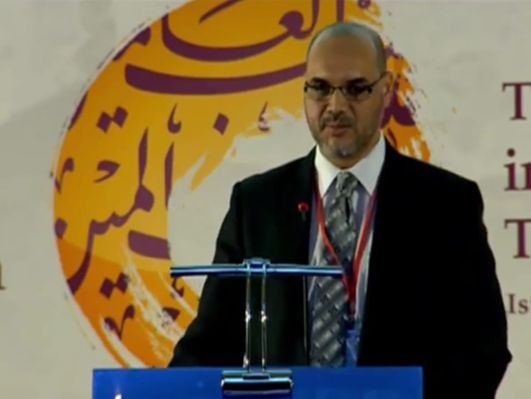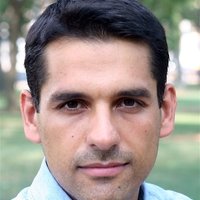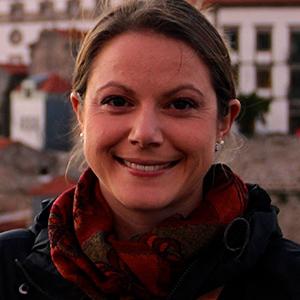2015 was a devastating year for France. At the end of my 15-month fieldwork research in December of 2014, the country was already dealing with an ongoing economic recession, a wildly unpopular president, and a fervent and growing far-right political party. Furthermore, social tensions surrounding Islam, laïcité, and immigration had been escalating over the past few decades, with same-sex marriage being added to the heated public debates in recent years. The Charlie Hebdo attacks of January 2015 took a heavy toll on the already vulnerable state of the country. But ensuing unifying events such as the Marche Republicane – the biggest rally (~3.7 million people nationwide) in France since the liberation in 1944 – helped France to pull together and brush off at least some of the dust.
But the violence wasn’t over. The November 2015 terrorist attacks on the Stade de France, the Bataclan concert hall, and nearby cafes and restaurants, that killed 130 randomly targeted individuals, rattled the nation to its core. As opposed to the Charlie Hebdo attacks, which can be seen as a violent overreaction to a provocative media outlet, the November attacks personally touched the lives of thousands of innocent, ordinary French civilians, injecting angst and fear into homes, schools, and everyday social outings. As is the case after nearly every incident of global terrorism linked to Islam, French Muslims again find themselves in the precarious position of being targeted by both the terrorists and by French society; the latter demanding apologies for the actions of despicable individuals who have very little to do with the religion that the vast majority of ordinary Muslims know and practice.
Immediately following the attacks, President Hollande enacted the nation’s state of emergency laws for the first time since the Algerian war—an important step for being able to track and detain necessary suspects, but a controversial one in terms of potentially sacrificing civil liberties for debatable improvements in national security. In just the first three days after the attacks, 414 homes were searched, 29 people were arrested, and 118 people were place on house arrest. Nearly 800 police raids took place in the two weeks following the attacks, including disruptive and destructive overnight raids of local and otherwise peaceful mosques, stirring up significant protest and fear in France’s Muslim communities. While at least a handful of these raids were touted publicly as being useful or successful, the tangible benefits of such extensive and invasive investigations remain unclear.
The misleading and deleterious amalgams made between Islam and terrorism that, although certainly a preexisting condition, have increased exponentially in the aftermath of these events, foment social distrust across the population, and fuel volatile hostilities within French society. How can France’s vibrantly plural population avoid falling into the destabilizing trap of blaming their co-citizens and pointing fingers at innocent Muslims? How can French society find peace and ways to coexist or embrace pluralism in the aftermath of these painful events and amid this social turbulence – especially with the looming and unsettling reality that there may be more violence to come? (An estimated 1,200-1,450 French nationals had left to join the forces of Daesch—also known as ISIS/ISIL—as of early 2015, and the figure has undoubtedly grown since. As a direct consequence of this recruitment, French and Belgium nationals made up a majority of the teams involved in the November attack, and this “internality” factor makes it exponentially more difficult for authorities to impede French born terrorists from re-entering the country and to track them once they cross the border). The unanswered questions, suspicion, fear, and aftermath of these horrific events have, among other things, spurred a new urgency for leaders and for social actors to find new and more effective strategies to mieux vivre ensemble (live better together).
The mieux vivre ensemble slogan and its various manifestations figured heavily in my fieldwork since it relates closely to my research interests and had been a headlining strategy for politicians and social organizations since the early 2000s. Mieux vivre ensemble projects and initiatives come in many forms, but tend to focus on (re)locating an operating consensus for French society, or at least for certain groups within French society—an operating consensus based on a set of values, beliefs, guidelines, or similar that allow France’s diverse population to live together…better. Some groups—such as the youth interfaith group Coexister—interpret mieux vivre ensemble as being an engaged coexistence for both religious and non-religious individuals; in other words, actively living together, celebrating religious and non-religious diversity, and embracing pluralism. Other groups such as SNRM (National service for relations with Muslims) and GAIC (Group of Islamic-Christian amity), which have been around for approximately 40 and 30 years respectively, take a strictly interreligious approach to working toward this goal, focusing on Christian-Muslim relations. These projects to mieux vivre ensemble, which are more thoroughly explored later in this blog, represent just a few of the widely varying responses to France’s new plurality – a plurality that demands new models for plural citizenship, new strategies for making multiculturalism work, and new interpretations of pluralism.
My 15 months of research in 2013 – 2014 involved digging deeper into this modern French plurality and the religious and social tensions that simultaneously influence and emerge from the ways that this plurality manifests itself in the hearts and minds of French citizens. Spending time in various ethico-religious communities of France—primarily pious Muslim and Catholic communities juxtaposed with the secular majority—I sought to learn how these different communities reacted to, ignored, and/or engaged with the new plurality and/or pluralism (plurality refers to the presence and interaction of multiple ethico-religious traditions within a given context, while pluralism refers to a principle or ethical tradition that seeks to embrace and affirm the reality of plurality), and subsequently with laïcité and “Frenchness.” How did their understandings of French citizenship differ; how did they work toward shaping and producing model(s) of “Frenchness,” and how did their concepts of “being French” clash and/or imbricate? Moreover, I tried to better understand how these communities managed (or not) to vivre ensemble (live together) despite varied and often opposed understandings of what religious pluralism is and should be in France.
Being a French Catholic in Plural France
In order to contextualize being a Catholic in today’s France—or a religious citizen of any denomination for that matter—we must first glance quickly back through history to understand the “chain of memory” of France’s majority religion. Prior to the French Revolution in 1789, the Catholic Church was an integral part of French life. Post-Revolution France underwent a number of political shifts, ultimately becoming known as a European exception with its strong laïque movements and anti-clericalism. Despite its plurality in terms of language, pockets of religious minorities, and regionally based cultural differences, France remained a majority Catholic country until the late 19th century. In the 1880s France developed its modern public, laïque (or secular/neutral) school system. The school reformers, led by Jules Ferry, set out to create a public school system free to all, without religious instruction, and with the intent to instill the Republic’s Revolutionary values of liberté, égalité, and fraternité in the minds of young citizens. This school reform was followed by the formal separation of Church and State in 1905, and lastly, the 1959 alteration of the constitution to describe France as a “laïque” Republic.
The steady movement away from a Catholic nation toward a “laïque” Republic significantly changed France’s social and cultural fabric. Catholic religious observance went through various stages, but showed an overall decrease during the 19th and 20th centuries. Some authors suggest that the final and decisive turning point was during the post-1960s era, which was characterized by “the gradual loosening of the ties between church and society”. In 1986 the Institut CSA reported that 81% of the French population claimed to be Catholic; in 2012, the figure had fallen to 56%. A different study by l’Institut nationale d’etudes demographiques (INED- INSEE) reported that in 2010 only 43% of the adult French population self-defined as Catholic. Another 2010 study reported that only 7% of Catholics attended mass on a monthly basis while 57% of Catholics considered themselves non-practicing Catholics.
The relatively new “minority” status of the modern Catholic Church was evident in my discussions with priests and parishioners across France. As one Parisian priest explained, “the Church is at the same time alive and dynamic and has also become a minority in a country where everyone has forgotten the Church and religion.” Along with the decline, there has also been a diversification of Catholic practice, giving way to a wide-ranging spectrum of what it means to be a French Catholic. For some, “being Catholic” means weekly mass; for others, it’s more about defining what they’re not – for example, not being atheist or Muslim. For many of those who comprise the 57% of Catholics who are non-practicing, Catholic is more a declared cultural affiliation than it is a religious observance.
Being a French Muslim in Plural France
While the Catholic Church watches its social and cultural capital decrease, another prominent minority religion has been on the rise. Islam has been considered France’s “second religion” since at least the 1960s and today it is estimated that approximately 5-8% of the French population is Muslim. France’s historical relationship with Islam has been long, complex, and often tumultuous. The battles of colonialism and the grueling Algerian war still weigh heavily in the memories of many Muslim (and non-Muslim) citizens of France (about 2 million French residents trace their roots to Algeria, and approximately 75% of the country’s Muslims have family origins in Algeria, Morocco, or Tunisia—however, despite common misperceptions and mistaken amalgams, only about half of the Muslims in France are of Arab descent). Along with more recent examples of oppression, discrimination, and inequality targeting Arabs and/or Muslims in France, these painful memories have given shape to complicated and sometimes volatile boundaries of nationality, belonging, and identity making among second and third generation youth – a prevalent topic in current discussions of youth radicalization.
According to at least one recent study, approximately 78% of French Muslims self-declare that religion is of great or moderate significance in their lives; only 24% of French Catholics would make the same statement. This, along with its relative newness and the highly mediatized political debates surrounding Muslim clothing and rituals, makes Islam a very public and practiced religion by comparison with Catholicism. That said, similar to the diverse ways that French Catholics practice, believe in, and belong to their faith, there are myriad ways to be a French Muslim – from nominal belonging and believing to pious devotion.
Furthermore, and also like their Catholic counterparts, French Muslim individuals and communities are engaged in a variety of responses to plurality, and demonstrate a variety of interpretations of Frenchness, laïcité, and “French Muslimness.” Some Muslims stand behind a discourse of strong laïcité—or the strict privatization of their religion, insisting that it does not impinge on their beliefs or practices, but rather allows them to practice their religion privately, freely, and unperturbed. Others make a stronger claim to their rights to freedom of expression and religion in the public sphere. (While these claims to the freedom of religion are wide ranging, many revolve around women’s dress—notably the headscarf, which, along with other ostensible religious signs, was banned from public schools in 2004 and is not permitted for public service employees, and the burka which was banned from public spaces in 2011—the source of significant controversy and hiring discrimination in the private sector). For every controversy and debate surrounding Islam in France, one can find Muslims supporting both or all of the different camps involved. It is precisely this diversity of practice and devotion that has led to significant intra-religious turmoil among certain Muslim communities in France – again, similar to intra-religious struggles found between French Catholic communities.
Finding a Friend in Faith
Over the past 50 years, the Catholic Church has been increasingly interested in engaging and supporting co-citizens from other faith traditions. In 1964, just after the Second Vatican Council, the French Catholic Church launched the Conseil pour les relations interreligieuses. In an effort to bolster its interfaith outreach, the Church later established one branch specifically aimed at relations with Judaism and another aimed toward relations with Islam. The latter Service nationale pour relations avec les musulmans (SNRM) was created in 1973 and is today the most active branch of Church-sponsored interreligious efforts. SNRM’s mission is to promote dialogue between Catholics and Muslims, to educate Catholics about Islam and interreligious work, to provide support for diocesan interreligious efforts, and to forge relationships with Muslim leaders.
From 2006 to 2015, SNRM’s was presided over by Father Christophe Roucou. Having lived for 9 years in Egypt, holding a degree from the Pontifical Institute of Arabic and Islamic Studies in Rome, and above all, believing firmly in the importance of interreligious dialogue, Father Roucou was the perfect candidate to take over the SNRM presidency in 2006. In collaboration with Tariq Oubrou, the Imam of the Grande Mosquée de Bordeaux, Father Roucou wrote “Le prêtre et l’imam” (The Priest and the Imam). The book uses a frank and far-ranging dialogue between the two men to discuss some of the topics that sometimes derail interreligious dialogue. Stepping down in 2015, Father Roucou was replaced by Father Vincent Feroldi, a religious historian by training, a longtime chaplain, and an invested participant in interreligious dialogue for more than 40 years. Father Feroldi has spent more than 6 year in Morocco and has travelled extensively throughout the Muslim world. The primary responsibility of the SNRM President is to maintain relations with Muslim leaders at the national level, as well as to serve as the national representative for the Church in Islamo-Christian and interfaith events across France. Both Father Roucou and Father Feroldi play an active role in an impressive number of dialogue efforts across the country and throughout Europe, and participate in many youth initiatives such as Coexister (see below).
Similar in some regards to the SNRM, Le Groupe d’Amitié Islamo-Chrétienne (GAIC) was co-founded by Muslim and Catholic leaders in 1984. The official goal of the group is to, “contribute to the development of an improved mutual knowledge of the Christian and Muslim communities and to promote the common ethical and spiritual values of Islam and Christianity within the framework of an open laïcité”. GAIC maintains Christian and Muslim co-presidents at all times, and in recent years this latter position has been filled by Imam and Chaplain Said Ali Koussay. Having emigrated from Madagascar more than 20 years ago, Koussay first became involved with GAIC in 1996. As he explained in an interview, he was searching for the same friendly, interreligious relations to which he was accustomed in Madagascar. As with Fathers Roucou and Feroldi, one can find Imam Koussay at local interreligious dialogue events on an almost weekly basis, as a speaker, guest, or simply in support of friends and colleagues involved in the event. Despite, or perhaps thanks to, their divergent backgrounds and different faiths, Fathers Roucou and Feroldi and Imam Koussay all believe firmly in the importance of interfaith work, community dialogue, and the necessity of setting a good moral example for all in one’s daily life.
There are a number of prominent Islamo-Christian groups and initiatives in France, many owing their founding to the Catholic Church’s role in fostering the integration of minority religions into French society. In addition to these Islamo-Christian initiatives, there are a wide variety of other interfaith groups in France as well. For example, the association Coexister was established by a group of young people in 2009, and is today the most prominent grassroots interfaith youth group in France with more than 12,000 supporters from across the world. Their primary ambition is to bring youth with diverse perspectives together, including atheists and agnostics, for the purpose of inspiring community and social engagement. The group focuses not only on dialogue, but also on sensitization of high school youth, citizen and social action to build solidarity, formation/education, and interfaith travel in order to learn from other countries and inspire new forms of interfaith involvement in France.
Challenges to Cooperative Coexistence
SNRM, GAIC, and Coexister are important examples of interreligious groups striving to mieux vivre ensemble. Nonetheless, there are significant challenges facing these and other interfaith cooperation efforts in today’s social turbulent France. In a northern Parisian suburb, for example, one priest involved in interreligious work through the local branch of SNRM lamented recent changes in his community. He said he used to be invited into Catholic classrooms on a regular basis to talk about Islam, but now the kids have stopped wanting to engage with the topic. “One kid told me, ‘we already spend all day with them. After all, we’re not here [in the Catholic school] for a class on Islam’.” He added that Catholics were becoming less interested in engaging in interreligious dialogue and events in the area because of a perceived increase in a threatening, “communitarianist” or closed-off Islam. In some cases, it is possible to point to communities that are experiencing a repli or “turning in” toward each other and away from the greater French society. In a small minority of cases this is due to the following of a specific religious doctrine, although often it is in reaction to polarizing public debates or as an alternative to otherwise feeling outcast from French society. However, a large part this perceived threat stems from negative media portrayal of certain populations, notably Muslims and certain ethnic groups, which is exacerbated by events such as the January and November Paris attacks. These kinds of events, perceptions, suspicions, and fears can quickly snowball into a destructive force, diminishing social trust and wreaking havoc on interfaith cooperation efforts.
Also contributing to the challenges of coexistence is the internal diversity of viewpoints within France’s various ethico-religious communities—an internal diversity that often points to more similarities between religions than within them. Thus, opinions about Frances’s new religious and cultural plurality do not align neatly along ethico-religious lines. Although many of the Catholics and Muslims with whom I spoke complained of a moral decline in French society, in many cases their characterizations of French morals differed more as a result of their neighborhood circumstances than it did their religious orientation. Furthermore, there are Catholics, Muslims, and atheists who agree that religion should remain strictly private and that religious symbols should not be allowed in public schools or public administrative positions. On the other hand, there are members of each ethico-religious community who disagree with and even staunchly oppose these opinions. Often times, both sides of such debates will make claims in the name of laïcité simply using opposing interpretations of the concept. This intra-community plurality poses a challenge to interreligious dialogue since there is much intrareligious debate to be had before interreligious dialogue can fruitfully move forward. This is particularly the case for those varieties of dialogue that seek to invoke text-based orthodoxy so as to highlight commonalities across ethico-religious traditions. Where dialogue is based upon a faith-community’s presumed homogeneity the result can be superficial conversation or and even reinforced stereotypes.
Furthermore interfaith efforts in France tend to be limited to dialogue rather than creating sustainable projects of working across faiths toward a common goal. Dialoguing is recognized by nearly all those involved in interreligious work as an important and crucial contribution. However, as the Coexister founders (among others) have suggested, establishing local, grass roots, sustainable efforts to come together as religious communities to advance specific social causes can perhaps better affect real change. Another shortcoming of some interfaith events in France is the failure to include atheist or agnostic representatives, thus leaving out more than 1/3 of France’s population from the discussion. In many of the events I attended, a priest, a rabbi, and an imam would discuss their common, often religiously grounded, views on a theme. Even those religious representatives who believed in including all voices in the dialogue, as to mieux vivre ensemble, would often slip into a religiously grounded moral discourse that tended to exclude atheist and agnostic perspectives. This was especially commonplace in interreligious events organized to discuss recent topics such as gay marriage and adoption, as well as gender equality education in primary schools.
These publically contested and controversial topics illustrate the complexities and challenges of the new French plurality. In May 2013, France passed a law granting homosexuals the right to marry. In the months leading up to the vote, there were strong protests in support of and against the proposed law. After the law passed, the protests grew and became more volatile. More than religious values as such, the majority of protestors rallied to the idea of the importance of traditional family values. However, the media did not let France ignore the strong Catholic and Muslim support for the protests, as well as support from the far right. Some observers pointed to the irony of Muslims and the far-right being bedfellows. Others noted the unique opportunity for a very publicized form of collaboration between Muslims and Catholics, although the actual degree of cooperation varied across protest groups and locations. It seems that there was a considerable degree of collaborative effort in Lyon, for example, where the Muslim and Catholic populations have a particularly close relationship. However, in Paris, the pattern was more one of Catholics and Muslims protesting side by side, but not hand in hand. Again, the level of intra-community diversity of those involved played an important role in fostering or hindering inter-community collaboration.
The last major protest was held in February 2014, almost a year after the law’s passage. The protest drew fewer but still substantial numbers of people into the streets of Paris, Lyon, and Lille. Added to the protest agenda was the new gender equality program, scheduled for introduction into state primary schools in the fall of 2014. The program, known as ABC De l’Egalite, caused an uproar in Muslim, Catholic, and Jewish communities (among others), when rumors spread that young children were to be taught that gender is a “choice” rather than a naturally ascribed characteristic, that homosexuality is as normal as , and that masturbation is healthy and natural.
Mieux Vivre Ensemble?
Although the mariage pour tous protests and gender education remain salient issues in French society, the gravity of the 2015 attacks have, for the most part, overshadowed such debates. The public and political focus is now nearly-exclusively oriented toward Islam, Muslims (both French and non-French), terrorism, Syrian refugees, and immigration—sometimes spoken of as one monolithic amalgam—especially as citizens look ahead to the 2017 presidential elections. Even the economy has slipped into second place to some extent. The necessity of finding solutions to mieux vivre ensemble has not been so strikingly apparent for decades. How can French society and leaders negotiate and attenuate the current social turmoil? Are the policies of laïcité and assimilatory citizenship working? Are policy revisions necessary? Or do new models of secularism and citizenship need to be considered? Should “Frenchness” be redefined to make room for the new plurality and if so, how, and where should the boundaries of belonging be placed? Where should the line between public order and freedom of expression be drawn? How “public” should religion be allowed to be and what difference does this actually make to security concerns? Groups like SNRM, GAIC, and Coexister represent the optimistic vanguard for dialogue, tolerance, and cooperation. However, today’s conflict of interpretations with regard to Frenchness and plurality, exacerbated by a climate of fear, suspicion, and social distrust, present formidable and as of yet unresolved challenges to France’s enduring mission to mieux vivre ensemble.

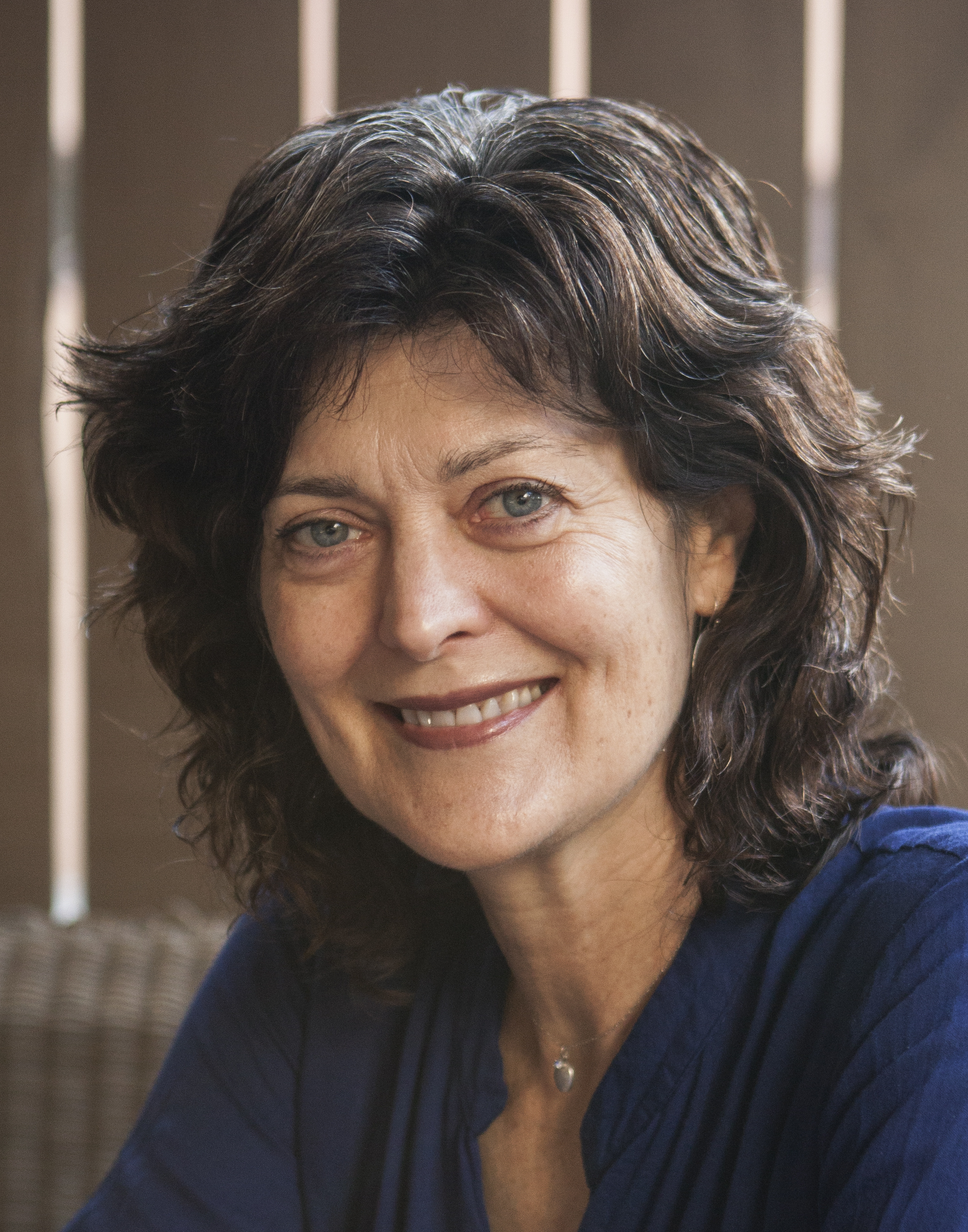
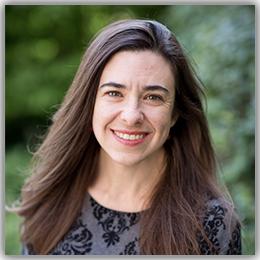
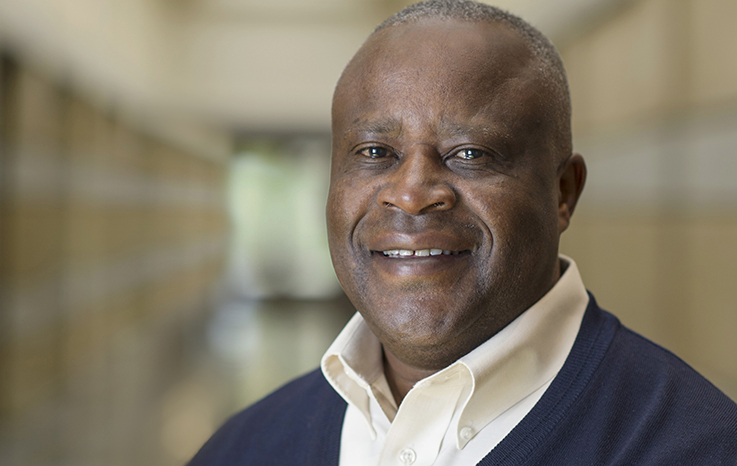
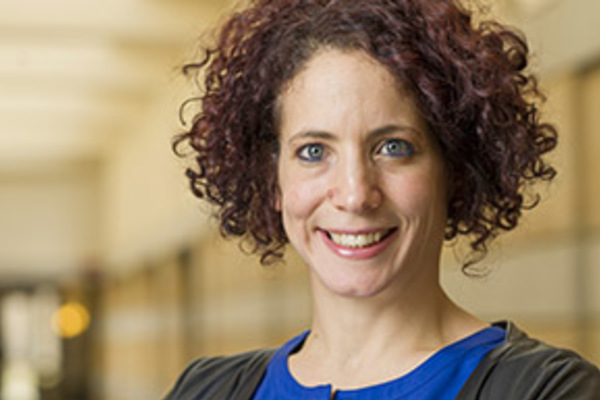
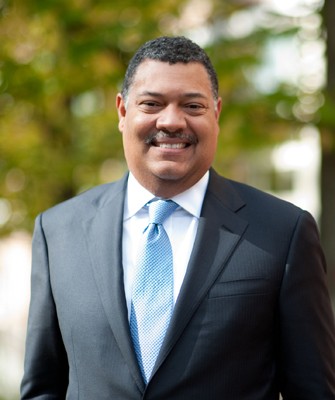


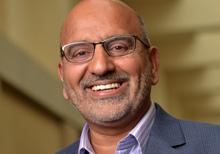
 on the letter “t” transforming it to “x”, thus changing the meaning from “believe’ to “cross”.
on the letter “t” transforming it to “x”, thus changing the meaning from “believe’ to “cross”.